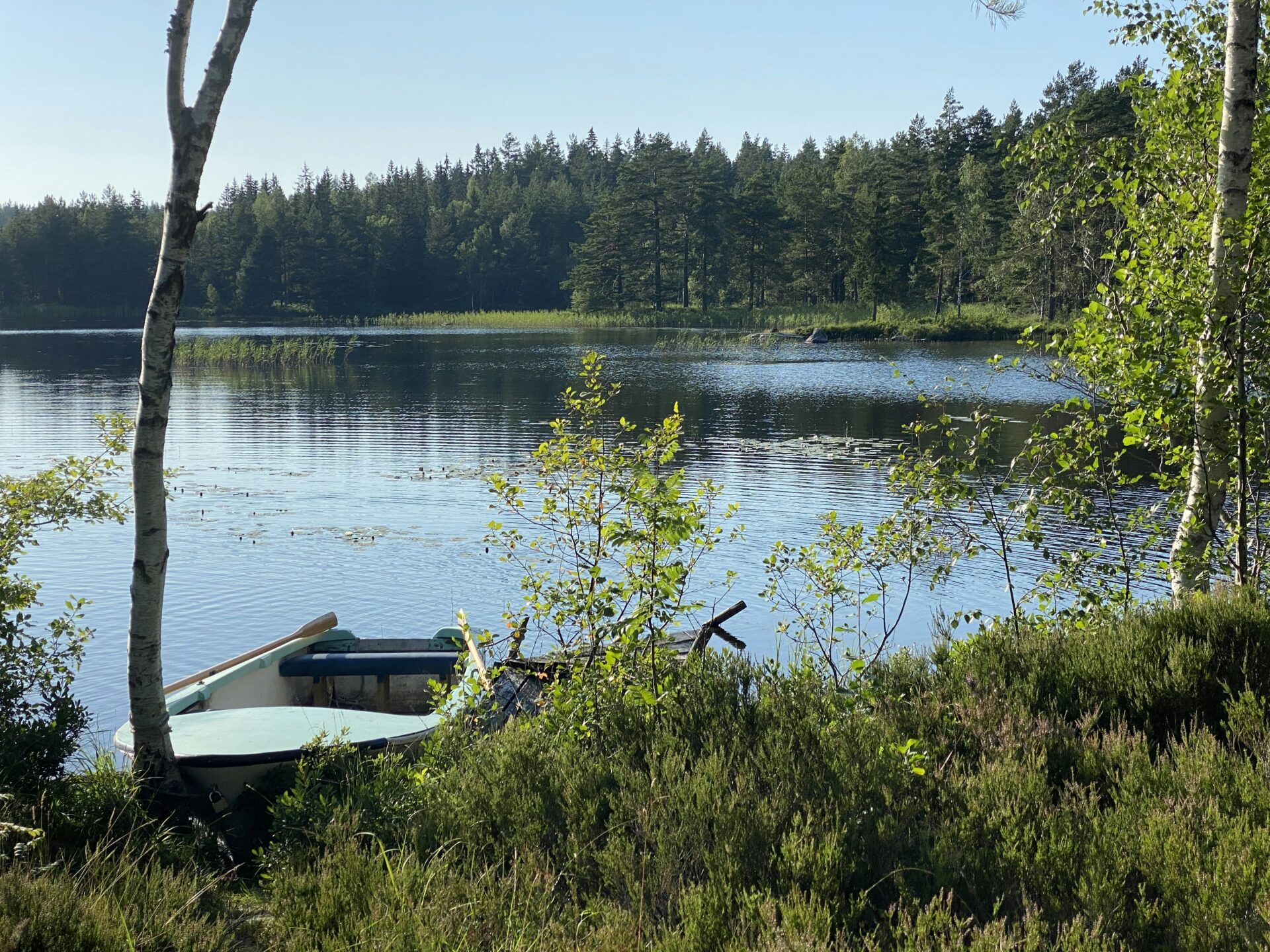Imagine a world where children step away from screens and devices, and instead, immerse themselves in the wonders of nature. “Wildlife Encounters: Teaching Kids the Art of Outdoor Adventure” is an article that delves into the importance of introducing children to the beauty and excitement of wildlife. In this captivating piece, you will discover how these encounters with nature can prepare kids for outdoor adventures, fostering a love for the great outdoors while sparking their curiosity and imagination. Get ready to embark on a journey filled with exhilarating encounters, educational insights, and unforgettable memories.
Understanding the Importance of Wildlife Encounters
Developing a connection with nature
Encountering wildlife offers a unique opportunity for you to develop a deep connection with the natural world around you. It allows you to witness the beauty and wonder of animals in their natural habitats. By immersing yourself in nature and observing wildlife up close, you can gain a newfound appreciation for the intricate balance of ecosystems and the important role that each species plays.
Promoting respect and conservation
Wildlife encounters enable you to develop a sense of respect for the natural world and a desire to protect it. As you witness the delicate relationships between animals, their habitats, and their prey, you begin to grasp the interconnectedness of all living things. This understanding fosters a sense of responsibility to conserve and protect these fragile ecosystems for future generations.
Learning about different species and habitats
Engaging with wildlife provides a rich educational experience, allowing you to learn about various species and their habitats. Whether it’s observing the majestic flight of a bald eagle or witnessing the playful antics of dolphins in the ocean, each encounter offers a valuable opportunity to expand your knowledge and understanding of the natural world. These experiences can inspire a lifelong love for learning and spark curiosity about the incredible diversity of life on our planet.
Educational Benefits of Wildlife Encounters
Engaging kids in hands-on learning
One of the greatest benefits of wildlife encounters is the hands-on learning experience it offers for children. By immersing themselves in the natural world, kids can learn about animals, their behavior, and their habitats in a way that no textbook can replicate. This interactive learning experience enhances their understanding and retention of knowledge, fostering a deeper connection between children and the environment.
Teaching children about biodiversity
Encountering different species of wildlife provides an excellent opportunity to teach children about biodiversity. They can witness firsthand the incredible variety of life forms on our planet, from the microscopic organisms that thrive in ponds to the majestic mammals that roam the savannah. This exposure helps children appreciate the importance of preserving and protecting the fragile web of life, ensuring the continued existence of all living things.
Instilling a sense of curiosity and wonder
Wildlife encounters have a magical way of instilling a sense of curiosity and wonder in children. As they observe animals in their natural habitats, their innate sense of wonder is awakened. The beauty and complexity of nature spark countless questions and create a thirst for knowledge. Encouraging children to follow their curiosity and explore the world around them fosters a lifelong love for learning and discovery.
Enhancing knowledge of ecosystems
Wildlife encounters provide an unparalleled opportunity to deepen a child’s understanding of ecosystems. By observing animals in their natural habitats, children can witness the delicate balance and intricate relationships that exist within these ecosystems. They can see how animals rely on each other for survival, how plants provide food and shelter, and how environmental changes can impact the entire ecosystem. This firsthand experience helps children grasp the importance of preserving and protecting these delicate ecosystems.

Planning Safe and Responsible Wildlife Encounters
Researching appropriate wildlife destinations
When planning a wildlife encounter, it is crucial to research and choose appropriate destinations. Look for places that prioritize the well-being of animals and their habitats. National parks, nature reserves, and wildlife sanctuaries often have designated areas where visitors can observe wildlife without disturbing their natural behavior.
Understanding potential risks and safety guidelines
While wildlife encounters can be exciting, it is important to understand and respect the potential risks involved. Some animals may be dangerous or unpredictable in certain situations. It’s crucial to familiarize yourself with safety guidelines and follow them strictly to ensure your safety and the welfare of the animals.
Booking guided tours with experienced professionals
To enhance your wildlife encounter experience, consider booking guided tours with experienced professionals. These guides are knowledgeable about local wildlife, their behavior, and the best practices for observing them safely. They can provide valuable insights and help you make the most out of your encounter while minimizing any potential harm to the animals.
Acquiring necessary permits and licenses
In some cases, you may need to acquire permits or licenses to access certain wildlife areas or participate in specific activities. Research the local regulations and ensure that you have obtained all the necessary permits before embarking on your wildlife adventure. This helps protect the fragile ecosystems and ensures that you are complying with legal requirements.
Wildlife Activities for Kids
Birdwatching in local parks
Birdwatching is a fantastic wildlife activity for kids of all ages. Grab a pair of binoculars, head to your local park, and start observing the wonderful world of birds. Encourage children to identify different bird species, note their behaviors, and listen to their enchanting melodies. Birdwatching not only offers an exciting adventure but also helps children develop patience, observation skills, and an appreciation for the beauty of nature.
Exploring nature trails and hiking
Exploring nature trails and hiking in wildlife-rich areas is a great way to expose children to the wonders of the natural world. As they walk through forests, meadows, or along scenic coastlines, they can encounter various plants, animals, and geological features. Encourage children to engage their senses by listening to the sounds of nature, feeling the textures of leaves and tree trunks, and observing the intricate details of plants and insects along the trail.
Participating in wildlife photography
Wildlife photography can be a thrilling activity for kids, allowing them to capture moments of wildlife encounters and create lasting memories. Provide children with a camera or a smartphone with a good quality camera, and encourage them to snap photos of animals, plants, and breathtaking landscapes. This activity not only promotes creativity but also nurtures observation skills and patience.
Identifying animal tracks and signs
Teach your children the art of tracking by showing them how to identify animal tracks and signs. Take them on nature walks and ask them to search for footprints, scat, and other clues left behind by wildlife. Explain the importance of these tracks and signs in understanding animal behavior and interactions. This activity enhances children’s observational skills and knowledge of animal behavior.
Setting up a backyard wildlife habitat
Creating a wildlife-friendly backyard habitat is an excellent way to engage children in wildlife encounters on a regular basis. Help them set up bird feeders, birdhouses, and water sources to attract a variety of birds and other wildlife. Encourage children to observe and document the visitors to their backyard habitat, providing them with endless opportunities to learn about wildlife and their needs.

Teaching Kids about Animal Behavior
Observing animal behavior in the wild
Observing animal behavior in the wild is an important aspect of wildlife encounters. Help children understand the significance of respectful observation and how it contributes to our knowledge of animals. Encourage them to look for patterns, note behaviors, and make observations that can deepen their understanding of animal behavior.
Learning to interpret animal communication
Animals communicate in various ways, and learning to interpret their signals and cues can be a fascinating experience for children. Teach kids about the different forms of animal communication, such as vocalizations, body language, and scent marking. Help them understand how animals use these signals to convey messages to others of their species and how they can interpret these messages.
Understanding predator-prey relationships
Predator-prey relationships are an integral part of wildlife encounters. Teach children about the delicate balance between predators and their prey, how different animals adapt to survive, and the role of predators in maintaining healthy ecosystems. By understanding this complex interplay, children can gain a deeper appreciation for the intricacies of the natural world.
Discovering animal adaptation strategies
Animals have unique adaptations that allow them to thrive in their environments. Engage children in discussions about adaptation and how different animals have developed specific characteristics to survive. Encourage them to think about the ways in which an animal’s physical features, behavior, and diet are all interconnected and optimized for its specific habitat.
Wildlife Conservation Projects for Kids
Organizing neighborhood cleanups
Engaging kids in neighborhood cleanups is an impactful way to instill a sense of responsibility for the environment and wildlife. Take the initiative to organize cleanup events where children can gather their friends, family, and community members to clear litter from local parks, beaches, or other wildlife areas. This activity promotes teamwork, community involvement, and an understanding of the importance of preserving natural habitats.
Creating wildlife-friendly gardens
Encourage kids to create wildlife-friendly gardens in their own backyard or community setting. Help them choose native plants that attract butterflies, bees, and birds. By providing these creatures with a safe haven and a source of food, children can contribute to preserving local biodiversity and creating habitats for wildlife.
Building nesting boxes for birds
Birds play a vital role in maintaining balance in ecosystems, and building nesting boxes for them can provide much-needed shelters. Engage kids in a simple construction project to build nesting boxes suitable for different bird species. Explain how these structures provide safe places for birds to raise their young and contribute to their overall survival.
Participating in citizen science programs
Citizen science programs offer engaging opportunities for children to contribute to wildlife conservation efforts. Many organizations invite individuals of all ages to participate in data collection, such as monitoring bird populations, tracking migration patterns, or recording species sightings. By involving kids in citizen science projects, they can actively contribute to scientific research while gaining a deeper understanding of the importance of conservation.
Raising awareness through educational campaigns
Encourage children to raise awareness about wildlife conservation through educational campaigns. They can create posters, present school projects, or organize community events to spread the word about the importance of protecting wildlife and their habitats. Empowering children to be advocates for wildlife helps foster a sense of responsibility and gives them a platform to make a positive impact in their communities.

Wildlife Safety and Etiquette Tips
Maintaining a safe distance from wildlife
When encountering wildlife, it is crucial to maintain a safe distance to ensure the well-being of both animals and humans. Respect their space and avoid approaching them too closely, as this can cause stress for the animals and potentially put yourself at risk. Use binoculars or telephoto lenses to observe wildlife from a safe distance, allowing them to go about their natural behaviors undisturbed.
Respecting animal habitats and nesting sites
Respecting animal habitats and nesting sites is vital for wildlife conservation. Teach kids to be aware of protected areas and signs indicating sensitive zones where animals may be nesting or breeding. Avoid trespassing or disturbing these areas to give wildlife a safe and undisturbed environment to thrive.
Avoiding feeding or touching wild animals
Feeding or touching wild animals is not only potentially harmful to the animals but can also put humans at risk. Teach children the importance of letting animals find their own food sources and never attempt to touch or handle them. Feeding wildlife can alter their natural behaviors and dependencies, leading to imbalances in their ecosystems.
Understanding the importance of leaving no trace
Leaving no trace is a fundamental principle of responsible outdoor ethics. Teach children to minimize their impact on wildlife and their habitats by packing out all trash, avoiding disturbing natural features, and refraining from any actions that could harm the environment. By instilling this mindset in children, we can ensure that future generations can enjoy wildlife encounters and the beauty of nature.
Preparing for Wildlife Encounters
Packing essential gear for outdoor adventures
Before embarking on a wildlife encounter, ensure you have packed essential gear for your outdoor adventure. This may include appropriate clothing, sturdy footwear, insect repellent, sun protection, and a waterproof jacket. Having the necessary gear ensures your comfort and safety while allowing you to fully enjoy the experience.
Dressing appropriately for the weather
Checking the weather forecast and dressing appropriately is key to having an enjoyable wildlife encounter. In colder climates, layering clothing and wearing thermal gear will help you stay warm. In warmer temperatures, lightweight and breathable clothing, along with hats and sunglasses, will provide protection from the sun.
Carrying field guides and binoculars
Field guides and binoculars are invaluable tools for wildlife encounters. Field guides help you identify different species and learn more about their behaviors and habitats. Binoculars allow you to observe animals from a distance without disturbing them. Encourage children to use field guides and binoculars and teach them how to properly identify and observe wildlife.
Bringing snacks and water
Staying hydrated and nourished during wildlife encounters is essential, especially if you plan to spend an extended period in nature. Pack snacks and water to keep you and your children energized and hydrated throughout your adventure. Remember to dispose of any waste properly to help preserve the natural environment.
Knowing basic first aid
Having basic first aid knowledge is crucial for any outdoor adventure. Take the time to familiarize yourself with first aid practices like treating minor cuts, scrapes, and insect bites. Knowing how to respond to potential emergencies gives you peace of mind and ensures the safety of everyone involved in the wildlife encounter.
Overcoming Challenges in Wildlife Encounters
Dealing with fear or anxiety
Encountering wildlife can sometimes evoke fear or anxiety, especially if you encounter potentially dangerous animals. It is essential to address these feelings and educate children about appropriate responses and safety measures. Teach them the importance of respecting wildlife and following expert advice to minimize risks, helping them overcome any apprehensions they may have.
Educating kids about potentially dangerous animals
Educating children about potentially dangerous animals is essential for their safety. Teach them about animals that may pose a threat and how to identify warning signs. Emphasize the importance of staying calm and avoiding sudden movements or actions that may provoke an animal. Knowledge empowers children to make informed decisions and respond appropriately in unpredictable wildlife encounters.
Learning how to respond to unexpected situations
Unexpected situations can arise during wildlife encounters, such as sudden changes in animal behavior or encounters with injured wildlife. Teach children the importance of alertness and quick thinking while providing guidance on how to respond to such situations. Encourage them to seek assistance from experienced professionals or authorized personnel in case of emergencies or if they encounter wildlife in distress.
Encouraging resilience and problem-solving
Wildlife encounters can be unpredictable and may present challenges or obstacles along the way. Encourage children to develop resilience and problem-solving skills by helping them navigate these challenges. This fosters their ability to adapt to changing situations and find creative solutions, which are valuable life skills that extend beyond their encounters with wildlife.
Fostering a Lifelong Appreciation for Wildlife
Creating memorable experiences in nature
Every wildlife encounter has the potential to create lasting memories. Nurture these experiences by capturing photos, journaling, and discussing your observations with children. Reflecting on these moments helps solidify their connection with wildlife and creates a foundation for a lifelong appreciation and respect for the natural world.
Encouraging ongoing learning and exploration
Wildlife encounters should not be isolated events but rather serve as catalysts for ongoing learning and exploration. Encourage children to take an active interest in nature, read books about wildlife, and engage in further research about the species they have encountered. This continuous learning journey ensures that their passion for wildlife remains alive and evolves over time.
Supporting local conservation initiatives
Go beyond the wildlife encounter experience and support local conservation initiatives. Get involved in community events, volunteer for wildlife rehabilitation centers, or donate to organizations dedicated to protecting wildlife and their habitats. By actively contributing to conservation efforts, you instill in children the importance of taking action and making a positive impact on the world around them.
Sharing stories and experiences with others
Sharing stories and experiences with others is a powerful way to inspire and ignite a love for wildlife. Encourage children to share their wildlife encounter stories with friends, classmates, or family members. This not only spreads awareness but also cultivates a collective appreciation for nature and encourages others to embark on their own wildlife adventures.
In conclusion, wildlife encounters have numerous benefits for both children and adults. They create a deep connection between humans and the natural world, promote respect for wildlife and their habitats, and offer valuable educational opportunities. By planning safe and responsible encounters, engaging in wildlife activities, and teaching kids about animal behavior, we can foster an appreciation for wildlife that lasts a lifetime. Through conservation projects, practicing wildlife safety and etiquette, and preparing for encounters, we ensure the well-being of both humans and animals. By overcoming challenges and fostering a lifelong appreciation for wildlife, we empower children to become stewards of the environment and advocates for conservation. So, go out into nature, immerse yourself in the wonders of wildlife, and let the adventure unfold.

